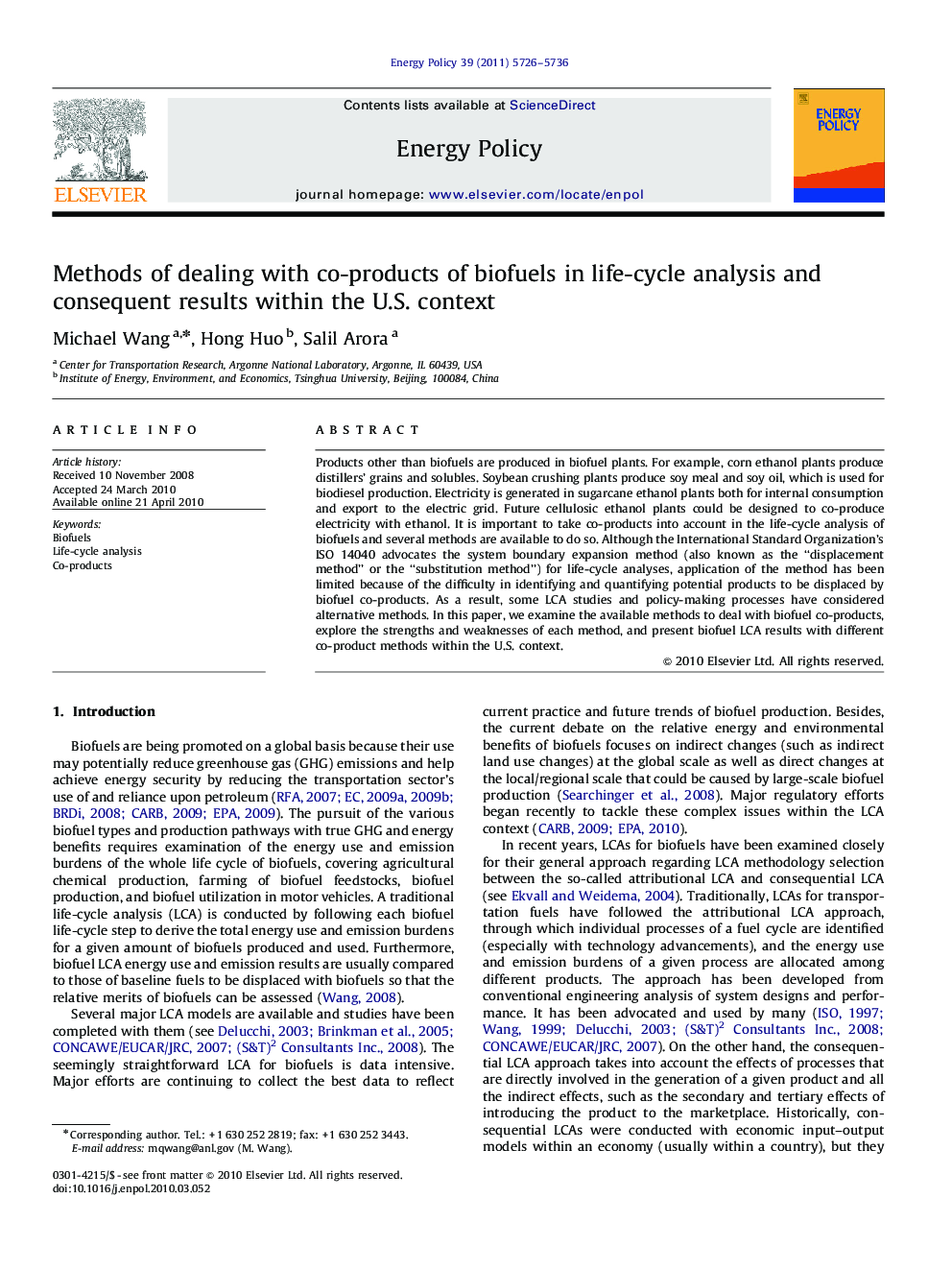| Article ID | Journal | Published Year | Pages | File Type |
|---|---|---|---|---|
| 993015 | Energy Policy | 2011 | 11 Pages |
Products other than biofuels are produced in biofuel plants. For example, corn ethanol plants produce distillers’ grains and solubles. Soybean crushing plants produce soy meal and soy oil, which is used for biodiesel production. Electricity is generated in sugarcane ethanol plants both for internal consumption and export to the electric grid. Future cellulosic ethanol plants could be designed to co-produce electricity with ethanol. It is important to take co-products into account in the life-cycle analysis of biofuels and several methods are available to do so. Although the International Standard Organization’s ISO 14040 advocates the system boundary expansion method (also known as the “displacement method” or the “substitution method”) for life-cycle analyses, application of the method has been limited because of the difficulty in identifying and quantifying potential products to be displaced by biofuel co-products. As a result, some LCA studies and policy-making processes have considered alternative methods. In this paper, we examine the available methods to deal with biofuel co-products, explore the strengths and weaknesses of each method, and present biofuel LCA results with different co-product methods within the U.S. context.
